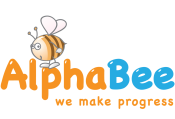Emotional Regulation Strategies for Children with ASD
Discover effective Social Skills Groups: Techniques and Approaches for children with autism.

Emotional regulation is...
Emotional regulation is the ability to manage and respond to emotions in a healthy and appropriate way. For children with Autism Spectrum Disorder (ASD), this can be a challenging skill to develop. At AlphaBee, we understand the importance of emotional regulation and offer strategies to help children with ASD and other developmental delays navigate their feelings. In this blog, we’ll explore what emotional regulation is, why it matters, and practical strategies that may help your child feel more in control of their emotions.
What Is Emotional Regulation?
Emotional regulation refers to the ability to recognize, understand, and manage emotions in a way that is appropriate to the situation. For children with ASD, this might include:
- Identifying when they feel happy, sad, angry, or overwhelmed.
- Using strategies to calm down when upset.
- Expressing emotions in a way that others can understand.
Developing emotional regulation skills can help children feel more confident and capable in their daily lives.
Why Is Emotional Regulation Important for Children with ASD?
Children with ASD often experience emotions more intensely or have difficulty expressing how they feel. This can lead to frustration, meltdowns, or withdrawal. Emotional regulation strategies may help by:
- Reducing stress and anxiety.
- Improving communication and relationships.
- Encouraging independence and problem-solving.
- Supporting overall well-being and happiness.
By teaching emotional regulation, we can help children with ASD navigate their world more effectively.
Popular Emotional Regulation Strategies for Children with ASD
There are many evidence-based strategies that may help children with ASD develop emotional regulation skills. Here are some of the most effective approaches:
Visual Supports
Visual aids, such as emotion charts or feeling cards, can help children identify and understand their emotions. For example, a “feelings thermometer” can show different levels of emotions, from calm to upset, and help children recognize when they need to use calming strategies.
Deep Breathing Exercises
Deep breathing is a simple yet powerful tool for calming the body and mind. Teach your child to take slow, deep breaths when they feel overwhelmed. You can make it fun by pretending to blow up a balloon or smell a flower.
Social Stories
Social stories are short, descriptive stories that explain social situations and appropriate responses. They can help children understand what to do when they feel certain emotions, such as anger or frustration.
Sensory Tools
Many children with ASD find sensory tools helpful for managing emotions. Items like stress balls, weighted blankets, or fidget toys can provide comfort and help them self-regulate.
Emotion Coaching
Emotion coaching involves helping children name their emotions and understand why they feel a certain way. For example, you might say, “I see you’re feeling angry because your toy broke. Let’s take a deep breath and figure out what to do next.”
Creating a Calm-Down Space
A calm-down space is a designated area where children can go to relax and regroup. Fill it with comforting items like soft pillows, calming music, or favorite books.
These approaches are tailored to each child’s unique needs, ensuring they receive the support they need to succeed.
How AlphaBee Supports Emotional Regulation
At AlphaBee, we are committed to helping children with ASD develop the skills they need to thrive. Our programs incorporate emotional regulation strategies into daily activities, ensuring that children learn these skills in a natural and supportive environment. Here’s how we can help:
- Individualized Plans: We create personalized strategies based on your child’s unique needs and strengths.
- Guided Practice: Our trained professionals guide children through activities that teach emotional regulation, such as role-playing or group discussions.
- Parent Involvement: We provide resources and strategies for parents to reinforce emotional regulation at home.
Our goal is to empower children with ASD to manage their emotions and build confidence in their abilities.

Emotional regulation is a key skill that may help children with ASD navigate their emotions and build confidence in their daily lives. At AlphaBee, we are here to support you and your child every step of the way. If you’re interested in learning more about our programs and strategies contact us or book a callback today. Together, we can help your child unlock their full potential and thrive.
Let’s take this journey together—one emotion at a time!

